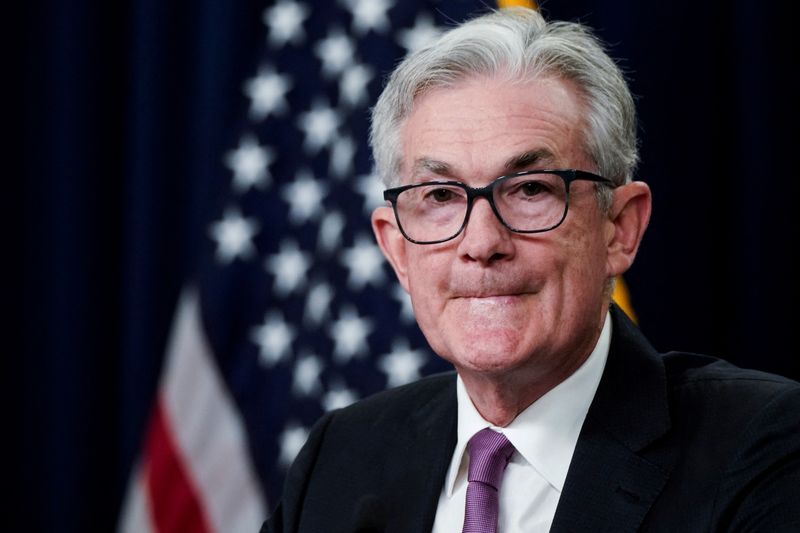By Yasin Ebrahim
Investing.com -- Federal Reserve Chairman Jerome Powell said Wednesday that the pace of rate hikes is likely to slow, but the peak level of rates will be higher than previously expected as there is a long way to go to curb above-trend inflation.
"Moderating the pace of rate increases may come as soon as the December meeting," Powell said in speech on Wednesday at the Brookings Institution event in Washington. He added that the Fed's monetary policy was approaching "the level of restraint that will be sufficient to bring inflation down."
The Fed chairman, however, pushed back against market bets for a sooner rather than later pause on rate hikes, saying that the peak level of rates, or the terminal rate, will need to be “somewhat higher than thought at the time of the September meeting and Summary of Economic Projections."
About 70% of traders expect the Fed to slow rate hikes to 50 basis point in December, down from 75 basis points seen in the prior four Fed meetings.
“We continue to expect the FOMC to slow the pace of rate hikes to 50bp in December and to 25bp in February, March, and May, raising the funds rate to a peak of 5-5.25%,” Goldman Sachs said in a note ahead of Powell’s remarks.”
The latest core personal consumption expenditures price index, the Fed’s preferred gauge of inflation, at 5% remains well above the Fed’s 2%.
The Fed has taken aim at the labor market in its fight against inflation, hoping that tighter monetary policy measures will help cool demand by enough to keep a lid on wage growth, and ultimately inflation.
Powell flagged core services, which excludes housing and covers a wide range of services from health care, education to hospitality as an important category of core inflation, and stressed that rising wages were a key driver of upward pressure.
"Because wages make up the largest cost in delivering these services, the labor market holds the key to understanding inflation in this category," Powell said.
Fresh labor market due Friday is expected to show that unemployment in November crept higher as more people entered the labor market.
"We expect nonfarm payrolls increased by 180k in November with an uptick in participation from 62.25% to 62.34%, which lifts the unemployment rate from 3.7% to 3.8%," Morgan Stanley said in a note.
